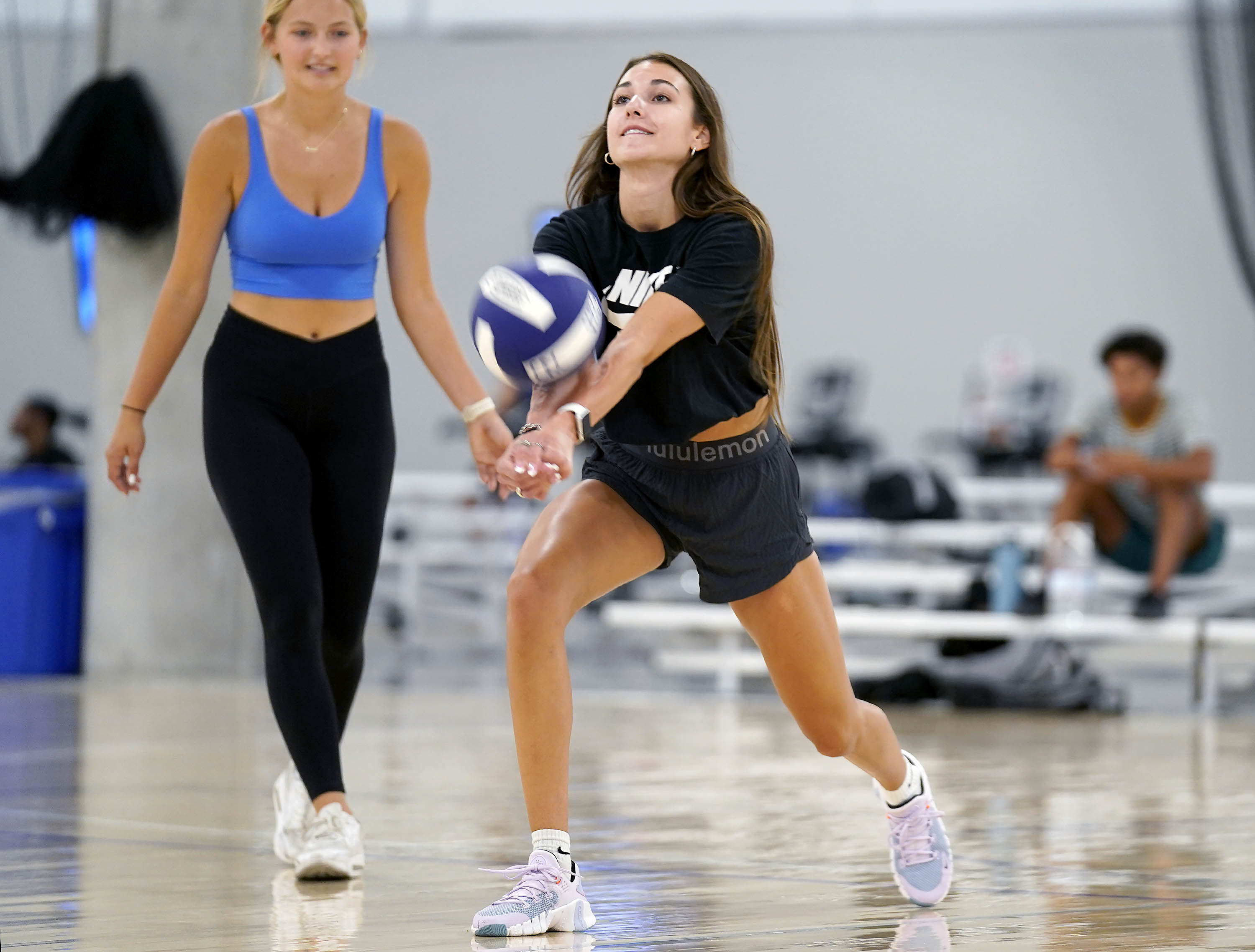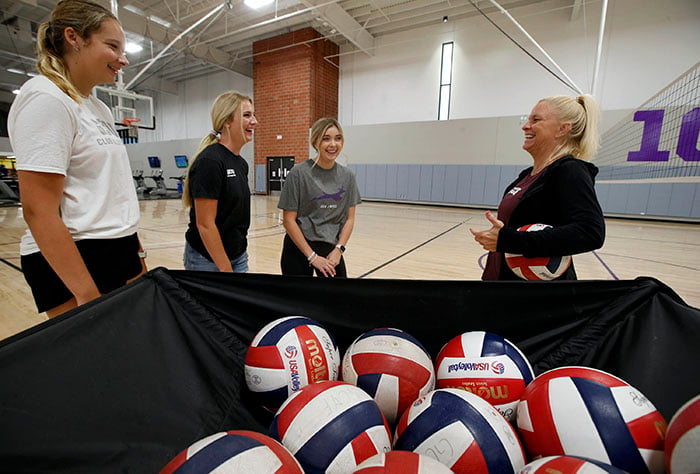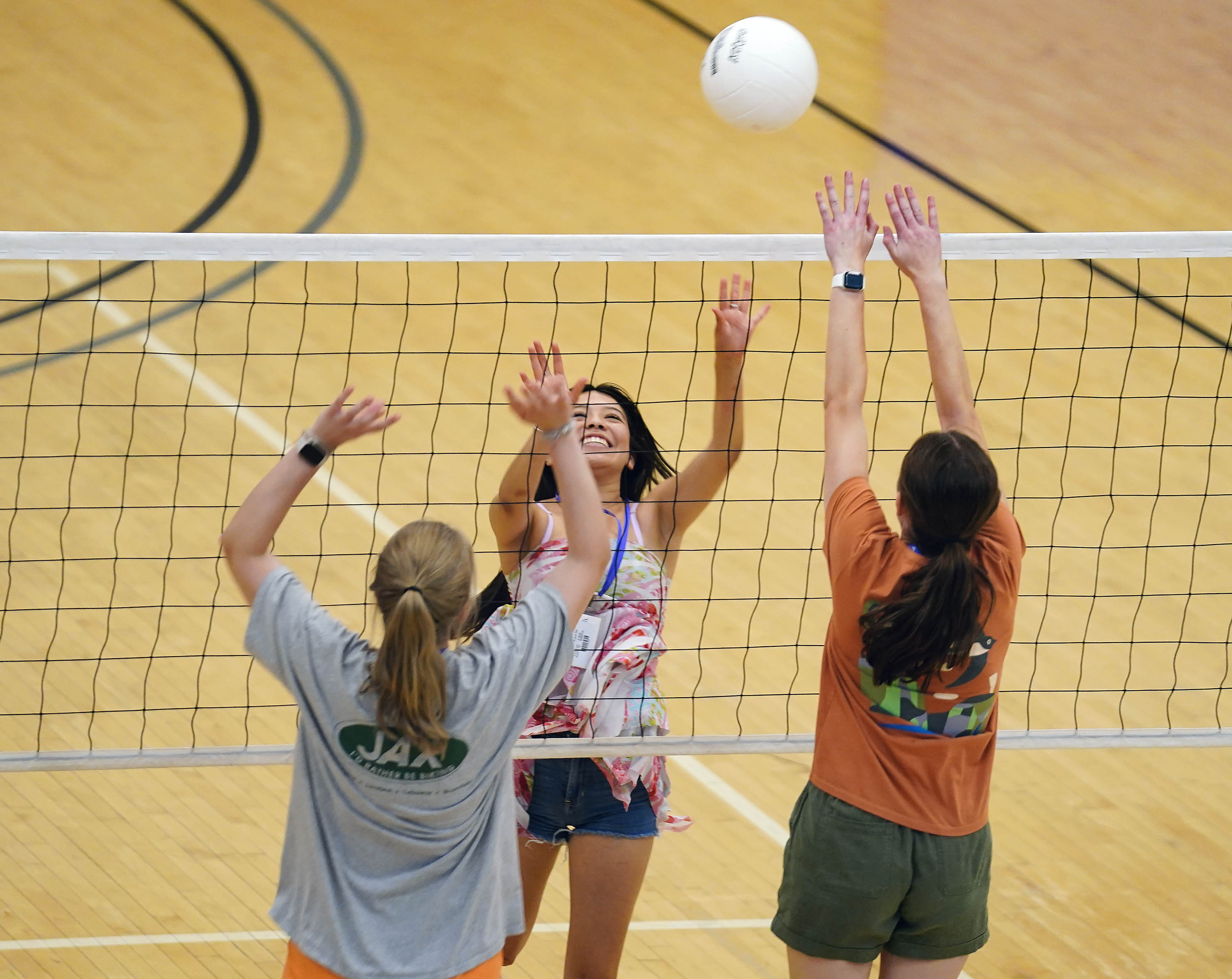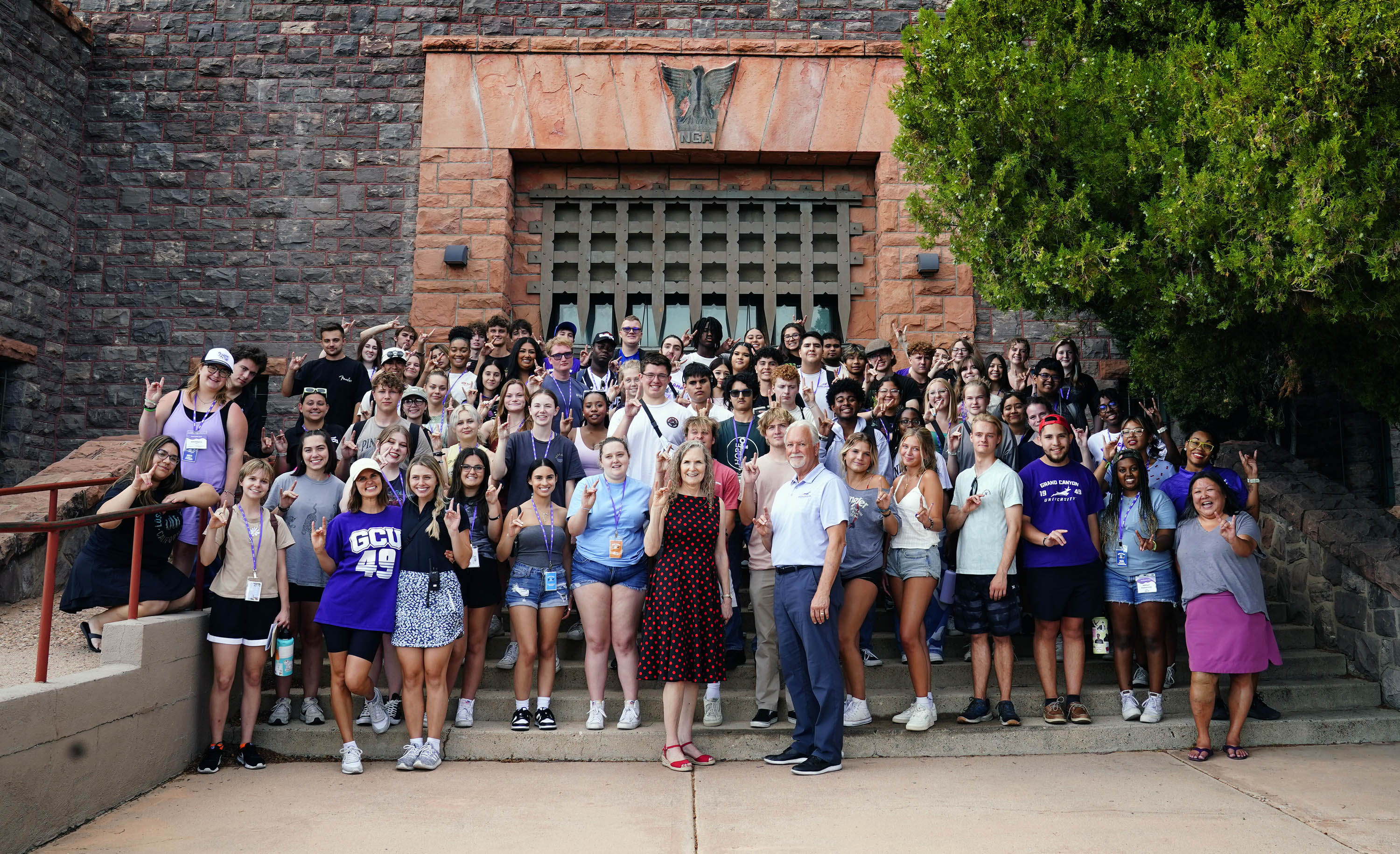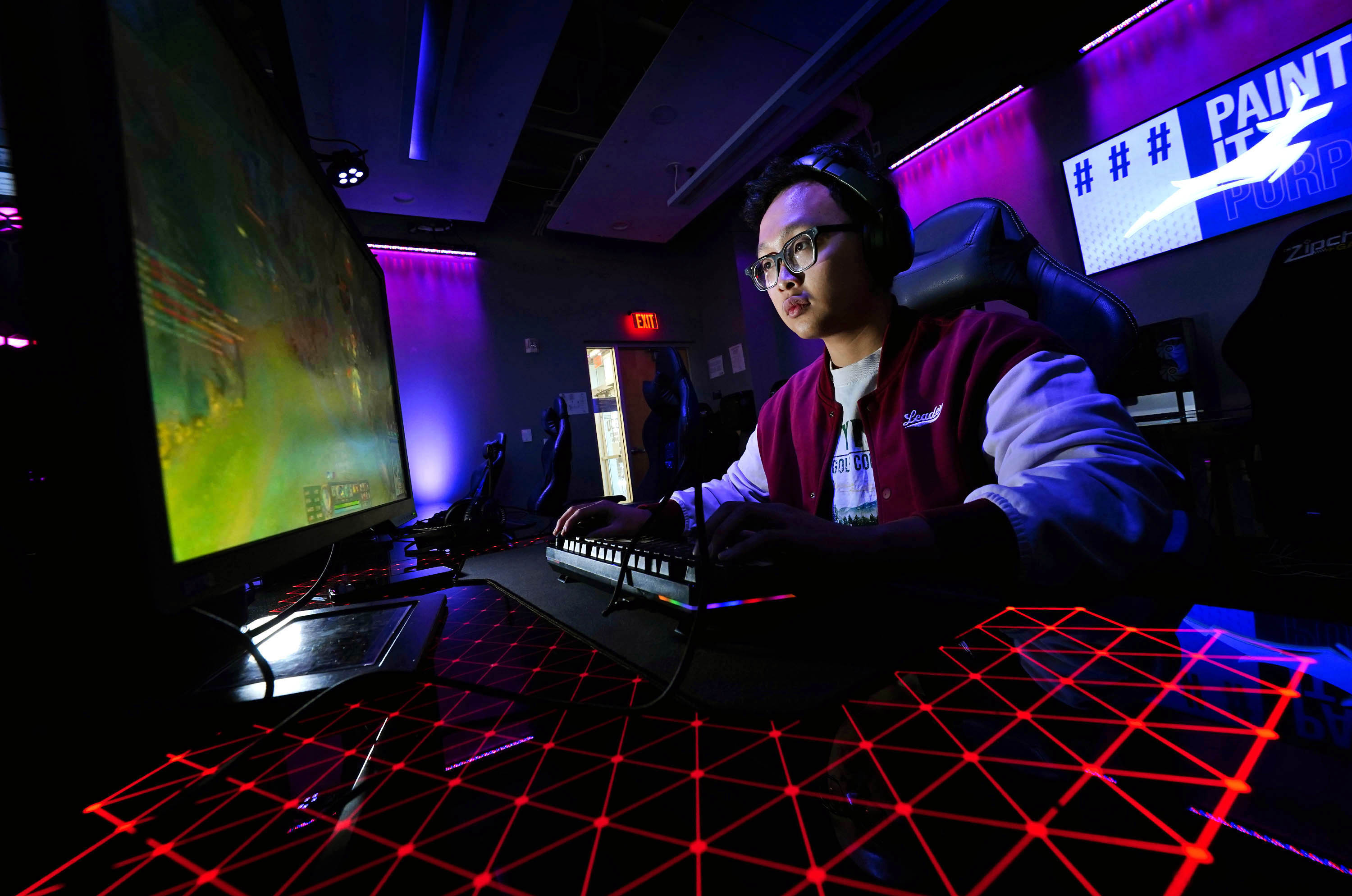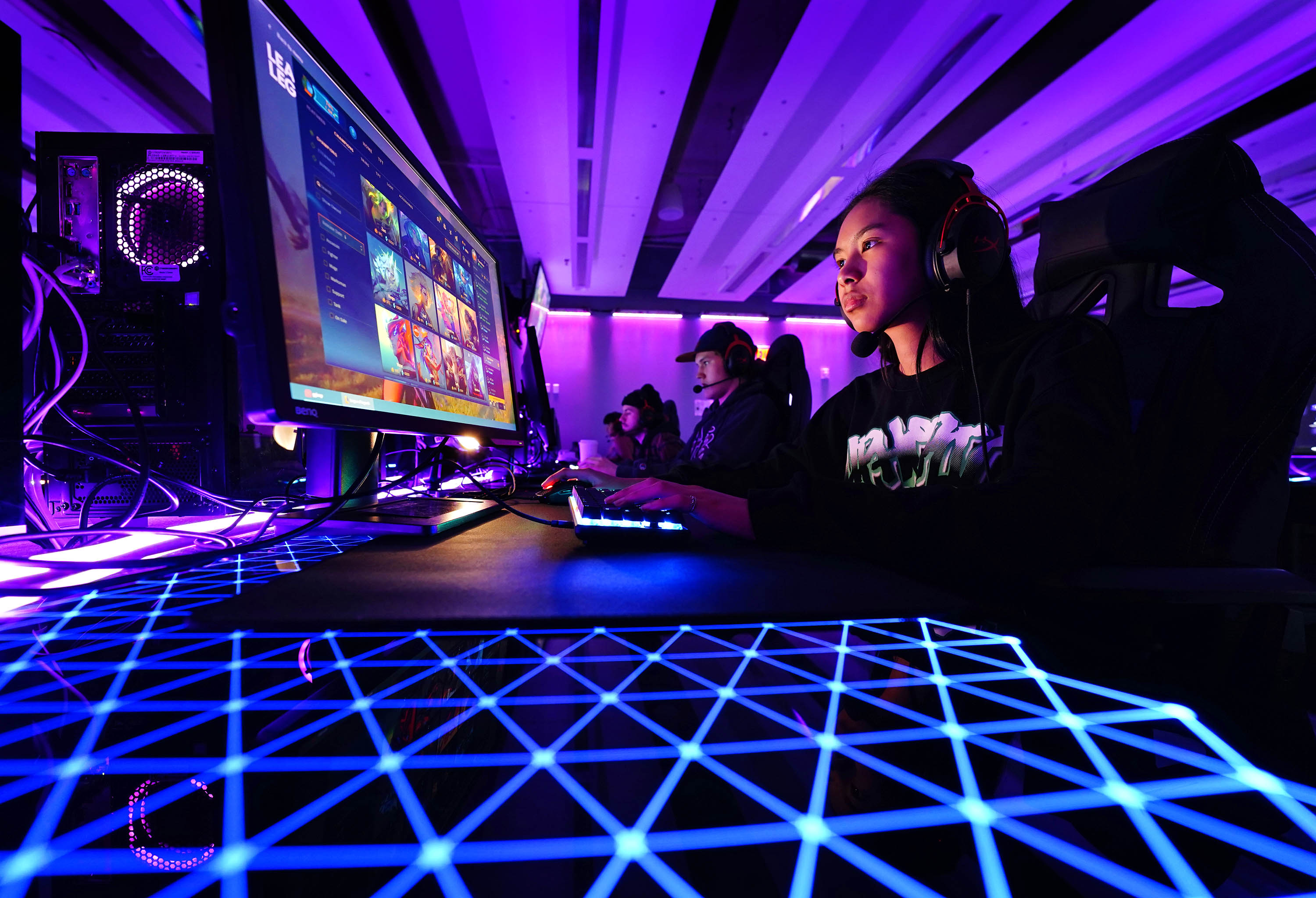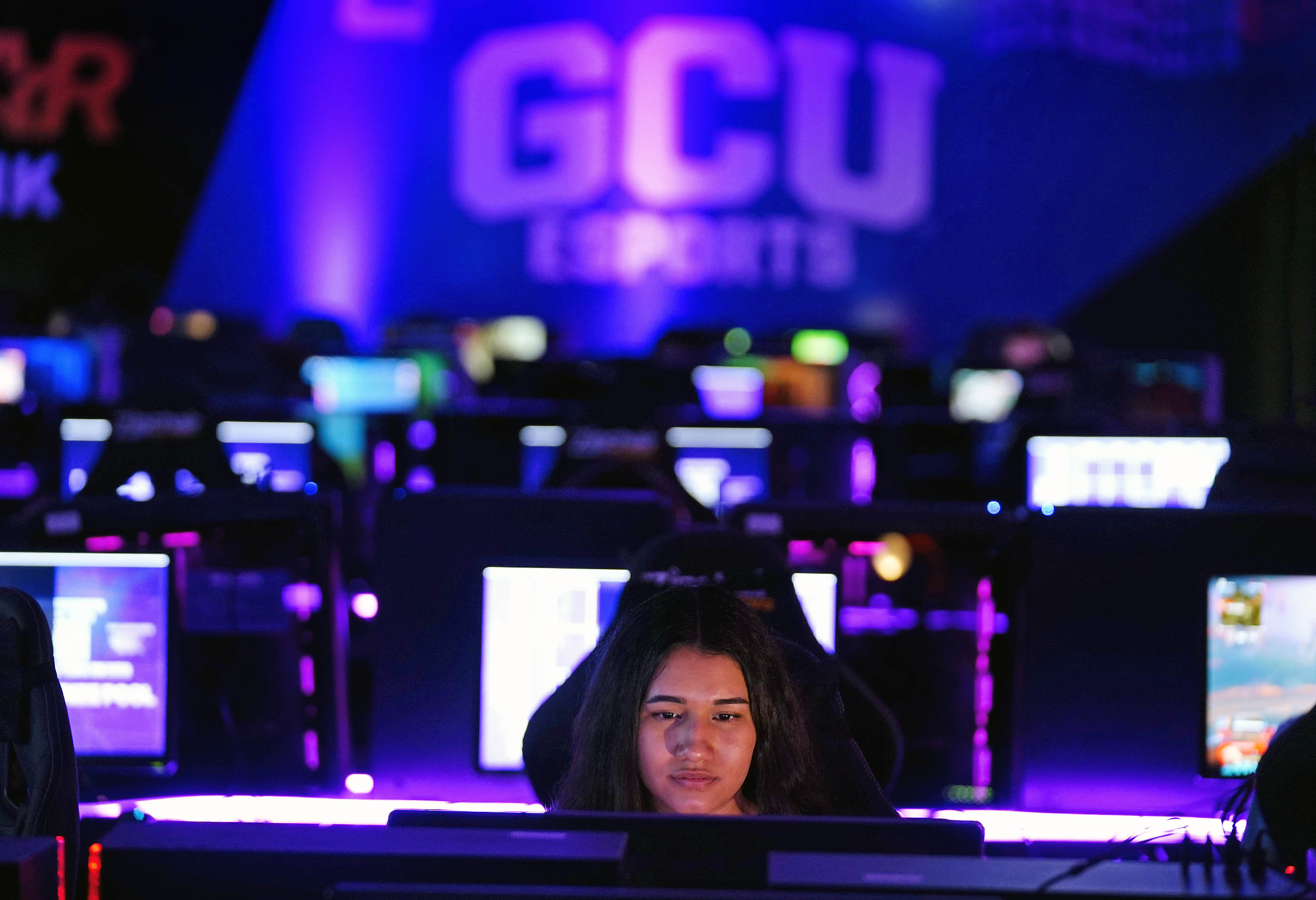
Editor’s note: Reprinted from the February 2021 issue of GCU Magazine. To read the digital version, click here.
By Rick Vacek
GCU Magazine
There is no truth to the notion that the thousands of cutouts in Grand Canyon University Arena for games this season can magically talk. It’s absolutely false that the people pictured – fans, former players, pop culture characters, Betty White – can scream and yell through their cardboard facsimiles, as if they are right there.
It only seems that way.

How else do you explain Nevada coach Steve Alford’s assessment after his team lost to the Lopes at the Arena?
“It’s a great place for energy, wow,” Alford said. “The 300 fans with all the cutouts, they know how to do it. That was a really cool environment. Of all the places we’ve been, this has been the best spot.”
How do you fathom the word Arizona State coach Bobby Hurley had for it two days later? “Crazy,” he called it.
It was yet another example of the pioneering spirit that enveloped GCU as the pandemic produced sights never seen in our lifetimes – such as cutouts in sports venues, which have made it jarring to see real fans next to them. Each innovation begs the question:
How did they do that? People at GCU haven’t just made the best of a challenging year, they’ve made it the best year for tackling challenges. People like Dr. Paul Koch, the Director of Bands – including the Thundering Heard Pep Band, one of the key components of the basketball game atmosphere.
Koch had sat through all the meetings to discuss how the game day experience would be drastically altered to accommodate COVID-19 protocols. He knew what to expect.
He knew attendance would be limited to on-campus students, and only a small number.
He knew that everyone except a select few, such as the players on the court, would be wearing masks.
He knew that there wouldn’t be the usual big, roaring crowd, a staple of the environment that has made GCU games a phenomenon known across the country.
It wouldn’t be the same this season. It couldn’t be, even with recorded cheers. And yet it still hit the mark, as Alford and Hurley noted. As time went on and Koch became accustomed to the new setup, he realized something:
“Now it’s more athlete focused. We’re still performing for the athletes; we’re still trying to put on a show. Athletes came here for that experience, and it’s nobody’s fault that we’re in a pandemic. The biggest challenge for the band – and I think I can speak for all the spirit programs – is that we like to perform.”
The comments by Alford and Hurley are a tribute to the coordination of the Spirit team to pump up the atmosphere. Because of the small crowds (or, in some cases, no crowds) at games this season, the NCAA allowed cheers to be piped in with volume restrictions.
Here’s how it works: When the recorded chant is cued, the Cheer and Dance teams, the band and members of the Havocs student cheer section follow along. It has to be coordinated with what is happening in the game.
“It’s not as easy as one would think,” said Emily Stephens, Director of Spirit Programs. “But after a few games we got into a rhythm, and it’s been a wonderful help to the overall sound and atmosphere GCU is known for.”
The Dance team’s numbers, meanwhile, are played on the screen during timeouts because COVID protocols prohibit them from being on the court.
The task of getting all those cutouts made in a relatively short period of time fell to Dallas Ryan, a marketing project specialist for Grand Canyon Education (GCE).
“It’s not a new idea, obviously,” he said. “We’ve all seen it done. To do it right, you have to do what we did.”
****
Similarly, it’s hardly revolutionary to livestream an event these days. Virtual communication is a way of COVID life, as commonplace as checking your cellphone while waiting for an appointment.
But what the College of Theology (COT) did with its One Foundation Lunch and Learn series was an extraordinary application of the innovative spirit.

Before the pandemic, faculty members would gather three times a semester in a lecture hall for one-hour sessions discussing the integration of faith into the GCU curriculum and culture. The ban on large gatherings made the in-person format a non starter, but the COT Dean, Dr. Jason Hiles, realized how much it would mean to faculty to continue the series.
“This is a moment when people really need something that’s consistent, something constant, something they’re used to that could provide some comfort and encouragement,” he said. “In addition, the pandemic has brought out the worst in people.
“There’s something about cultivating character – with faith, hope and love, the three theological virtues – when you’re in a tense moment. It’s almost like the resistance of the moment is providing us with an opportunity to become stronger, much like the resistance of free weights helps you gain muscle.”
As Hiles was contemplating his options, it just so happened that Steven Niedzielski, GCE’s Senior Multimedia Manager, knew of two perfectly good but unused robotic cameras in Antelope Gym and had his eye on creating what he envisioned as “a turnkey streaming venue” on campus.
“By that I mean a room where the cameras are built in and everything is there that you need to do a livestreamed event,” he said. “Everybody just walks in, you power up and with just a little bit of prep you do a livestream.”

It also just so happened that a previous Lunch and Learn site, the lecture hall in COT’s Howerton Hall, was the perfect candidate. Those two cameras were mounted on the back wall, the control room was upgraded, studio lights were brought in and, just like that, One Foundation had a new foundation.
Now it just needed someone to manage the sound and produce it, and there was another perfect candidate nearby: Eric Johnson, Manager of the GCU Recording Studio. He was eager to help.
“There already was a speaker system in that room, and we just kind of integrated it all,” Johnson said. “We put our heads together and said, ‘We’ve got to do this and this and this.’”
But the new features also forced them to do something else: change the One Foundation format. It previously had begun with a 15-minute PowerPoint presentation by a member of the Theology faculty.
“If you’re watching on livestream, you can’t have 15 minutes of a person talking or it feels like an eternity,” Hiles said. “You know how YouTube videos are – eight minutes is a commitment.”
Instead, Hiles became the moderator for two separate panels, one with Theology faculty and the other with members of another college. His concerns about looking into a camera rather than presenting to a live audience quickly were abated when the livestream drew good reviews from faculty, who watched it in far greater numbers than had ever attended in person.
And that audience still can ask questions. Viewers simply send a text to Hiles’ cellphone number, which is listed on the screen, and he relays the query to the panelists.
“Even though we miss the in-person experience, we’ve got these incredible panelists,” Hiles said. “It’s not a long-form, lecture kind of content, but it’s meeting a need and people are very responsive. I’ve gotten nothing but positive feedback.”
****
As with all innovations at GCU, the most important ones involve academics. And that meant one thing as University leaders incorporated nine different modalities of teaching for the fall semester.
“The primary focus was student success academically and to create a vibrant learning environment for them so that they could continue their program of study. We didn’t want them to be stuck in their program and not have the classes they need,” said Dr. Hank Radda, GCU’s Provost.

The results were tangible, none more than the 96.17% first-time pass rate in 2020 by College of Nursing and Health Care Professions students on the National Council Licensure Examination (NCLEX), required to become a registered nurse.
That was well above the state average of 91.44% and national average of 86.58% for the year and was particularly important given the desperate need for nurses to battle COVID.
But what made it even more remarkable was the disruption that occurred with hands-on experiences for the students, a key component of the GCU nursing program. For many GCU students, hands-on experiences in clinical facilities were reduced or restricted because of COVID-19. GCU’s solution: alternative online clinical and simulation training, complete with live instructor interaction.
Other examples were measured by production of videos and learning aids rather than test scores.
Melissa Beddow, Associate Professor for Forensic Science in the College of Science, Engineering and Technology, innovated by mailing materials to students so they could do labs for crime processing scenes. She created weekly videos demonstrating how to do the techniques, then was available for questions via Zoom while they did the work.
The College of Education (COE) faculty and staff created 21 virtual Explore More sessions, a video library with examples of instructional strategies, and a Maker Space.
A memo by Dr. Meredith Critchfield, a COE professor, about the Maker Space reflects the college’s vitality:
“‘What is a Maker Space?’ you ask. It’s a place to play, have fun, be inspired and get creative! We’re not just employees; we’re thinkers and doers and creators, and all of this helps to enrich our experience at GCU and ultimately helps to better serve our students. You can record high-quality Explore More sessions, Zoom lectures, course content newscasts, TikToks for your class, skits, you name it. The room is your oyster.”
The Colangelo College of Business increased the number of professional speakers visiting classes via Zoom and conducted the Canyon Challenge entrepreneurial competition online. Canyon Angels, the investor arm of the Canyon Ventures innovation center, created blended training for new members, led in part by its partner, Seed Spot.
The Honors College went online with its annual banquet, its 10-week professional development program and an initiative that pairs juniors and seniors with freshmen.
GCU’s Learning Lounge, a neighborhood staple since 2013, quickly transitioned to the GCU Virtual Learning Lounge and began helping K-12 students far beyond west Phoenix. The one-of-a-kind platform had been tried out on California students in 2019, and learning advocates (LEADs) conducted 1,344 online sessions from Aug. 24 to mid-January. About two thirds of the count represents returnees.
Online students benefited from the GCU innovation machine as well. The Online Student Tutoring Project had just begun when the pandemic hit in force, and the program soon was expanded to create three teams that assist with writing and math concepts and help students find resources.
Strategic Employer Initiatives & Internships (SEI) also continued to ramp up its virtual job fairs and other offerings in its quest to help students negotiate a difficult job market. It partnered with Faculty Training and Development to create a Faculty Resource Center On-Demand training to help faculty members get a clearer picture of how SEI can help them connect employers to the University, along with information about student support via Academic and Career Excellence (ACE) and the utilization of the Career Connections system.
In addition, SEI conducted webinars for employers to help them learn how to engage in a GCU virtual career fair.
And then there’s the College of Fine Arts and Production (COFAP), which had to face the music as much as anyone: How do you teach someone how to play an instrument if you’re not in the same room with them?
COFAP moved all private instruction online and invested in new audio interfaces and microphones for each practice room. Then it purchased licenses for all 29 of the program’s faculty members for Cleanfeed, a web program that massively upgrades audio quality.
After studying the biomedical emissions that come out of wind instruments, it purchased instrument covers that look like burlap bags, according to Koch. He conducted rehearsals with students spread across two basketball courts in the Canyon Activity Center, and similar care was taken when he utilized the smaller rehearsal room.
“It’s based on science,” Koch said. “It’s not based on a couple of band directors getting together.” There were many other innovations, of course. But there was one overriding lesson, in Radda’s mind:
“When the full team works together, faculty and staff, looking at data and what we need to accomplish, we can accomplish these things and do it with great success. It takes collaboration, conversations, viewing and reviewing data, and enhancing systems with a goal of helping students succeed.”
That’s how they did it – with innovation, with spirit and, sometimes, with a touch of humor. That’s how they made a lot of positive noise amid the pandemic’s din.
Contact Rick Vacek at (602) 639-8203 or rick.vacek@gcu.edu.
****
Related content:
GCU Today/GCU Magazine: My LopeLife: Class of 2020 has powerful perspective
GCU Today/GCU Magazine: COVID-19 couldn't stop GCU's mission in the community
GCU Today/GCU Magazine: His doctoral degree was a tough act to follow

